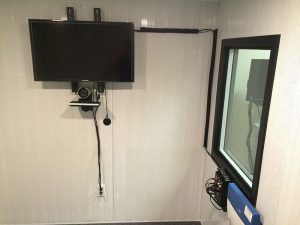In the telemedicine industry, tele-audiology has quickly become one of its leading modalities. As the remote provision of audiology and hearing care services, tele-audiology is not new care; it’s another delivery option for the same care provided in face-to-face environments. This can include services such as hearing aid fittings and adjustments, ear impressions, audiograms, repairs, and progressive tinnitus management. The Veterans Administration (VA) and the Department of Defense (DoD) are making tele-audiology a key component of their practice.
Saving Miles, Driving Audiology Care
An early adopter of telemedicine, the VA has made tele-audiology a key offering since it launched its pilot program in 2009. According to the American Academy of Audiology, travel distance and geographic barriers can limit veteran access to specialized clinical services. As of August 2017, the VA has collected over 8,000 tele-audiology outcomes, and says the outcomes are as good or better than face-to-face appointments. The VA also estimates that for Santa Rosa, CA, 150 tele-audiology appointments saved approximately 9,000 driving miles, and for Eureka, OR, 405 tele-audiology appointments saved approximately 108,540 miles. Both locations are serviced by the San Francisco VA Medical Center.
A Capital Solution
In August 2015, the DoD conducted a year-long pilot program in the National Capital Region (NCR) as a proof of concept for the Military Health System. Participating patients assigned to the Pentagon received tele-audiology care from a specialist located at Walter Reed National Military Medical Center (WRNMMC). Though personnel assigned to the Pentagon are relatively close to WRNMMC, driving to an appointment can take an extended amount of time and result in many lost man-hours due to severe traffic congestion. On average, Pentagon staffers were estimated to lose over two hours travelling to WRNMMC on top of the time needed for the examination. In eight months, the pilot program conducted over 100 tele-audiology appointments and saved Pentagon staffers more than 200 work hours.
GlobalMed, A Key Partner
In each of these scenarios, GlobalMed is a key partner in the VA and DoD tele-audiology programs. First using the GlobalMed i8500 audiology medical cart and now using the ClinicalAccess Station Audiology carts, the VA and DoD have quickly seen the patient benefits in providing tele-audiology as a service. Tele-audiology patients might not otherwise seek out treatment or skip monitoring appointments to get the treatment they need; tele-audiology provides a convenient channel for care, and saves transportation time and cost.
With the VA, we didn’t just sell them audiology equipment on a cart. We worked with them to create installations that allowed the VA to use tele-audiology to benefit veterans located long distances from VA Medical Centers. We integrated audiometers into sound booths with different transducers at VA CBOCs, allowing veterans to be tested, while connected to an audiologist. The sound booths contained a monitor so the veteran could see the audiologist; a camera so the audiologist could see the veteran; and a microphone with talk forward functionality so the audiologist could hear the veteran and hear the tones being presented for the test.
Another requested capability GlobalMed provided is the store-and-forward audiogram, which differs from tele-audiology in these ways:
- Tele-Audiology: An audiologist is connected to the cart that the patient and technician/nurse are in front of. The audiologist can control the audiology software remotely while the technician or nurse performs the hands-on tasks, such as seating the patient, connecting the correct instructed transducer on the patient, or obtaining images of the hearing aid, ear lobes and tympanic for the audiologist to see.
- Store-and-Forward Audiogram: A technician/nurse seats the patient in front of a touch screen system (or they can use the PC mouse) and connects the transducers to the patient so they can begin a self-automated hearing test. Once the test is completed, the technician/nurse sends images of the hearing aid, ear lobes, tympanic and the audiogram report to the VA PACs system for the audiologist to review.

GlobalMed also worked with the VA to create mobile RV tele-audiology units that could travel to CBOCs without audiology testing equipment. The RV units travel to vet centers for a day, so audiology patients can get the treatment they need without having to drive long distances.
Considering Tele-audiology for Your Practice?
At GlobalMed, we do more than sell medical devices and software applications. Implementing tele-audiology might seem daunting, but our professional services team can help you successfully incorporate tele-audiology into your practice. We’ll talk to you about your goals and needs, your patient base, and help you add a new dimension of service that will allow your practice to evolve and grow.
If you’re looking to improve access, reduce costs, improve patient care, and meet a growing patient demand, contact us today. We’re ready to help you.


I am interested in learning more about Tele-audiology program